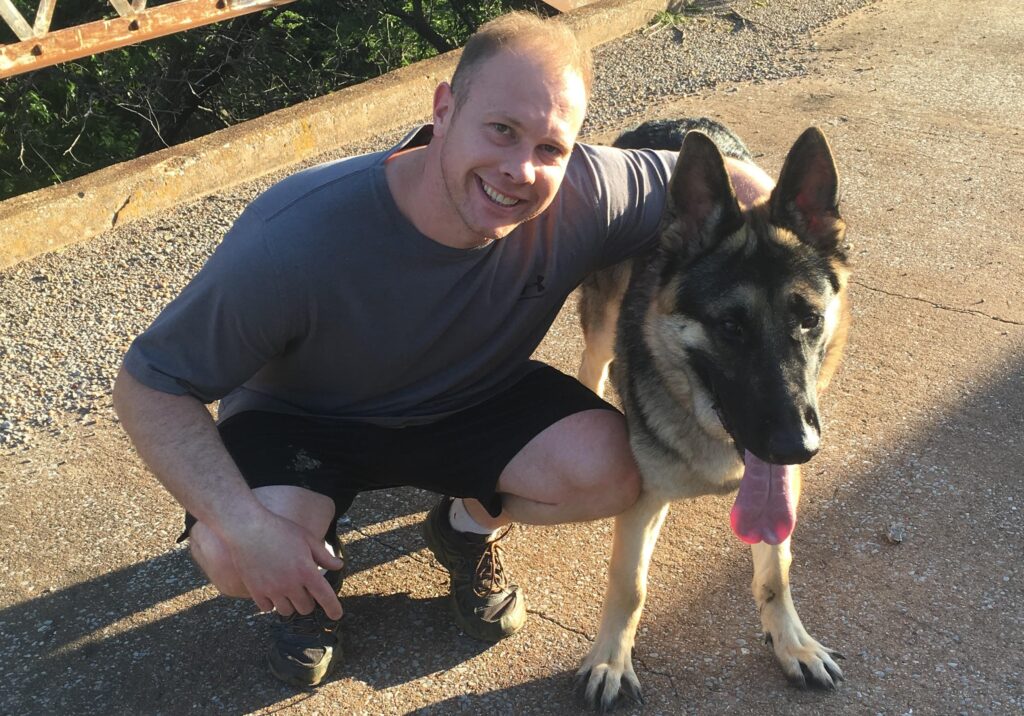Our Troops At Risk
Perhaps no cohort in the American public is exposed to more global vector-borne illnesses than the military. Active service members and their families travel around the world and spend more time in countries and environments (e.g., forests, grassy areas, swamps, etc.), where ticks and other vectors, such as mosquitoes, thrive; as a result, they are more likely to get bitten, thus increasing their risk for a range of diseases. Meanwhile, veterans may return home with a tick-borne illness, often without even realizing it, and fail to get the support they need to treat long-term symptoms. That’s one reason why Nicole Malachowski, a former United States Air Force officer and fighter pilot who was medically retired due to Lyme disease, believes that global tick-borne infections are “indeed a military readiness issue and therefore, by default, a national security issue.”
The Reality of Tick-Borne Diseases in the Military
Malachowski describes her experiences with a tick bite while actively serving in the military: “When I fell ill, I got what was known as a classic bull’s-eye rash on my right hip. Knowing what I know now, I would’ve been a lot more aggressive about getting treatment and an appropriate diagnosis. But I didn’t know anything. And when I went to the doctor, he did consider tick-borne diseases, and so much so that he brought a second doctor in, and they both looked at me, listened to my symptoms, looked at the rash, and then concluded, ‘We don’t have Lyme in North Carolina.’ At that point, they decided it was a spider bite. I was given a topical cream, steroid cream, and five days of oral antibiotic and sent on my way. And that was the day that I became disabled for the rest of my life.”
Malachowski would spend four years going to a variety of specialists and 18 months being evaluated by the military’s Medical Evaluation Board before officially being retired for chronic systemic tick-borne disease. Then began another four years of fighting to get the Department of Veterans Affairs to give her a disability rating. She still has to pay out of pocket to get treated by a tick-borne disease specialist. These days, Malachowski is a passionate advocate and public speaker: “There is not a week that has gone by since I medically retired in 2017 that I have not helped an active-duty service member or a family dependent answer questions about tick-borne illnesses.”
Tick-borne diseases can rob service members of their health and livelihood, and Malachowski has seen it firsthand. “There is a Lieutenant Colonel C-17 pilot worth millions of dollars of taxpayer investment, 15 years of service, who was just medically retired for chronic tick-borne illness,” she recounted. “A young tech sergeant that I worked with who is a trained professional in explosive ordinance disposal (EOD). Same thing. Diagnosed medically retired for tick-borne illness… An Air Force Lieutenant Colonel who worked in personnel, 20 plus years of service, medically retired.”
In the most tragic of cases, tick-borne illnesses can cost service members their lives. Malachowski shared about a female fighter pilot with 20-plus years of service, one of the few to fly the F-15, who was medically retired for late-stage tickborne illness, including Lyme and Bartonella. Due to the lack of access of care and the stigma and mocking she faced, she took her own life. Suicide is a leading cause of death in the tick-borne disease community, and Malachowski wishes to dedicate this interview to her fellow pilot and the loved ones she leaves behind.
These all-too-common stories are a call for basic human compassion for those who serve and are often left to fend for themselves, sometimes after forced retirement. And also, as Malachowski points out, by not finding better ways to support active service members, veterans, and military families, “the taxpayers of America are not getting the return on their investment that they deserve.” These are highly trained and specialized professionals who cannot achieve their full potential because their careers have been cut short by an unlucky tick bite.
Malachowski adds, “I can make a business case at a time when the United States Air Force is a thousand fighter pilots short to meet our national security strategy—which the last few years, the Chief of Staff of the Air Force has briefed those numbers to Congress—you’re going to lose fighter pilots and C-17 pilots because you can’t diagnose and treat tick-borne illness? Give me a break.”

Medical Gaslighting and Stigma: The Same Everywhere
Major Anders Karlsen returned home from serving overseas with a tick bite and unexplained cardiac symptoms that were made worse by altitude. Karlsen’s fellow pilots and peers in the military were highly supportive of him as he went out to find doctors and who could diagnose the root cause of his troubles, which turned out to be Lyme disease and bartonella. This was contrasted by the Air Force doctors. They quickly became dismissive and tried to call his symptoms “psychosomatic” and blame them on stress. For all intents and purposes, they abandoned him when the bacteria moved to a full-on attack of his heart and central nervous system.
Ultimately through a series of connections, circumstances, and the help of Malachowski, Major Karlsen was able to get effective IV antibiotic treatment overseen by physicians at Massachusetts General Hospital in Boston. It took direction from the Secretary of Defense to make that happen. It is likely the only reason he is alive today and unfortunate that intervention of this level was required to move military medicine.
Karlsen has also mentored military members from every branch of the DoD as tick-borne illness destroys their lives and careers. Gaslighting, dismissal, and abandonment are consistent themes he hears about from the military medical community directed at service members. There is no way to officially know how big the problem is, but it is clear to DoD members that it is much larger than is acknowledged.
Reflecting on his experiences in the military, Karlsen agreed with Malachowski that tick-borne disease, and the stigma attached to it, are “a force readiness issue. We don’t want our members dealing with this because it takes them out of the fight. It’s negative on training. It destroys families.” In Karlsen’s case, less than $100 of antibiotics promptly administered would have likely saved untold millions in training, not even considering the human toll.

The State of Tick-Borne Disease Education and Prevention in the Military
The military offers some information on Lyme and tick-borne diseases, but its low priority means that it is usually out of sight, out of mind. For instance, the Department of Defense Global Emerging Infections Surveillance program (GEIS) does recommend standard preventative measures on their website, such as wearing pants and long-sleeved shirts and doing regular tick checks. However, these safety measures are not being reinforced during practical training, so a lot of active service members simply haven’t heard of them.
Additionally, while it’s true that military uniforms are treated in permethrin, which has proven effective against ticks, most service members reuse the same uniform for the bulk of their careers. Malachowski shares, “I retired at 21 plus years with the same flight suits.” As time passes, and the uniforms undergo numerous washes, the permethrin fades away, and service members don’t realize they need to re-treat their clothes and gear to maintain protection against ticks.
In 2016, the Tick-Borne Disease Research Program (TBDRP) was established to help fund important research with the goal of reducing cases of Lyme disease and other tick-borne illnesses. This is a step forward toward addressing a global problem, but it’s not enough. Malachowski explains, “The Department of Defense and the Department of Veterans Affairs are well-suited to solve our community’s problems across the spectrum from surveillance to diagnostics to treatment, but until Congress tells them it is a priority and funds it, I am not sure that anything is ever going to change at the pace that we need it to change.”





